-
Posts
7,882 -
Joined
-
Last visited
Content Type
Profiles
Forums
Articles
Posts posted by kye
-
-
2 hours ago, Don Kotlos said:
I have something similar to @kye
That's a very interesting setup @Don Kotlos - I'd love a photo or description of how it's mounted. The mount that Rode provides works well but is large! I'd like to shrink my setup further if I can.
-
Here's the mic with the foam cover on top of the 700D and Sigma 18-35:
With the flash bracket underneath allowing the mic to be mounted on the side:
Underneath of the same setup - notice that the flash bracket is one of the smaller ones (15cm long) and it's in its shortest configuration:
If you put the whole thing on your palm then you can operate the focus (and maybe the zoom) with your left hand and hold the grip in your right:
or, if you extend it, then you can get to the zoom by going in-between the mic and the camera:
I've used larger brackets in the past to have multiple cameras when I wanted more than one focal length to enable jump-cuts. This is the only pic I could find, but I'm pretty sure that I actually used it with the mic in the middle like above. The more angle you put on the bracket the nicer it is to hold, but the more likely the mic or other camera will get in shot if you're using a wider lens.
On a sound-quality-related note, I have played around with many audio setups too, and found a few interesting things.
In terms of quality:
- The primary thing is self-noise (hiss) which you want to be low, the secondary thing is isolation where you pick up less background sounds, and the third is having a safety-track if something peaks, then last is 'sound quality'
- When YouTubers (and I assume non-audio people) talk about sound quality they are talking about hiss and then about EQ
- Talking about EQ is silly because you can adjust it in post in every video editing software known to man - at one point I was wondering about buying an expensive stereo mic for ambience, but I did some tests with the built-in mics on my cameras and they sounded just fine (with some EQ in post!) so I saved myself some money and carrying around a separate microphone, and now when I want some ambience I just unplug my shotgun mic and hit record and use the in-built mics
I've got the Beachtek unit mentioned and battery life was just awful - 5 hours with freshly-charged rechargeables. Forget the price of alkalines - it's approaching $1 per hour of use. I ended up buying the Rode VMP+ which has 19 hours of battery life and means I don't need a mic pre-amp at all, plus it charges via USB. If you sleep more than 5 hours a night you can literally just turn it on when you wake up and off when you put it back on charge at night! That makes it much less likely to stuff up a shot by forgetting to turn the mic on.
All of the above relates to on-camera shot-gun style sound setups, and for my home videos. I haven't messed with lavs or boom mics, so I'll leave that to Ironfilm in the other thread

-
2 minutes ago, tupp said:
Yes. I read that, but that makes even less sense than BMD and Panasonic offering only EF mounts (or longer) for their S35 cameras. What if somebody wants to use a M4/3 lens on the Yongnuo M4/3 camera? or, what if somebody wants to use a speed booster, tilt-shift adapter, c-mount lens, etc. on the Yongnuo M4/3 camera?
All they have to do to easily solve those dilemmas (and probably sell more cameras) is to start with a M4/3 mount and supply the camera with a smart, reinforced M4/3-to-EF adapter... and the camera will still take the Yongnuo lenses.
Who knows how much thought or market research goes into these things... or who their target market might be. They might be planning a killer marketing campaign to address the legitimate needs of users we don't know about on a social media network we're not even on!
-
Interesting - it looks pretty big compared to some m43 cameras. I guess the specs and price will tell us a lot more.
I'm not optimistic though.
9 hours ago, tupp said:Can't understand why they decided on an EF mount for a M4/3 camera, but it seems like many camera manufacturers wear blinders when it comes to considering any lens mount other than EF.
From the article - "The choice of lens mount is likely due to the fact that Yongnuo only makes lenses for Canon and Nikon, but no Micro Four Thirds glass."
If you went super-budget and only added their version of the 50mm 1.8 then you'd have the lens in your phone (likely 28mm with comparatively deep depth-of-field) and a 100mm equivalent lens with shallow depth-of-field, which is quite a good complimentary pair of focal-lengths and apertures IMHO.
-
24 minutes ago, IronFilm said:
Sometimes I wonder if people are doing something else which are making them look dodgy and creates attention.
Don't underestimate different parts of the world.. the NZ people I know are quite relaxed, and I'm an Aussie, so that's saying something!
There's something about big cities that make them a dog-eat-dog type of environment, and when you have to fight to survive it means that any kind of law-enforcement would toughen up quite a bit.
18 minutes ago, mercer said:Sometimes I wonder why people treat small productions as if they’re on a Hollywood set and are required by the union to have a best boy.
Thanks Kye, I’d like to see that set up.
Will post some pics when I get home

My sets always have a "most awesome person" (hint - it's always me!)

-
44 minutes ago, sanveer said:
I swear there is something about those mics. It almost seems like they are hiding some secret sauce. ?
I hope so!!
They look quite large to me - considering that a condenser microphone is a very small object. I'm having evil thoughts about them having multiple capsules in there with parabolic reflectors and wired in a way that makes the output more directional.
I'm probably completely wrong, but this thread is about taking very little evidence and running wild with it, right?
-
-
@mercer I quoted this from your audio recorders thread as my reply would have been a bit OT there.
On 10/05/2018 at 12:51 AM, mercer said:And just having the dead cat of the small Video Micro has gotten me looks from cops. And passers by will stop to ask what I’m shooting. Hell, using a monopod draws unwanted attention. A tripod would probably get me stopped by cops. Hell, I bet a gimbal would even get me stopped. I specifically went out and bought the Canon 28mm 1.8 lens so I could go handheld with a neck strap for those scenes.
I also own the Rode Video Micro and found that you can buy some cheap eBay foam covers that fit quite well and are a lot smaller. I bought a number of them to get the right sizing (the diameter of the Rode VM is on the larger size for the foam covers) but if you buy one that's a bit too big a cable tie or even a twisty-tie would secure it. The one I ended up using was for a long shotgun mic and I trimmed it down to length.
I haven't tested them for wind resistance, but it'll be better than nothing and the size difference is huge! Another 'trick' is instead of using them on the hot-shoe (which makes it look tall) you can buy dual flash brackets (eg http://www.ebay.com.au/itm/Dual-Flash-Bracket-Holder-For-1-4-Screw-Studio-Tripod-Light-Stand-Camera-GA-/182389726343?hash=item2a77465c87) and get a tripod to cold-shoe adapter which allows you to mount the mic next to the camera instead of on top, which hides the size a little bit. I found angling the bracket can make it quite ergonomic too.
Happy to take some pics of the setup if this is useful.
-
If one lens seems to work fine and others don't then perhaps it could be a bad connection between the lens and the adapter? I'd suggest cleaning the lens contacts on the offending lenses, on the adapter and on the camera as well.
It's quick and easy and worst case is the problem persists but now your lenses are a bit cleaner and you've ruled out a possible source of the issue

-
Does anyone know anything about how directional the audio will be? The mics are on the front after all..


If I could ditch my Rode VMP+ that would be another layer of icing on top of the rest of this camera-cake.
9 hours ago, Mark Romero 2 said:I'm guessing this is going to be a big seller considering there are already 101 pages of discussion on EOSHD...
The XC10 thread was similar.. pages = emotions = things to talk about. If you're familiar with the news media then you'll know that millions of column inches are devoted to BS every day around the world!
5 hours ago, Mokara said:There is processing going on as well. If that is done on the fly then it will bottleneck the data stream resulting in being spread out over the entire frame rather than coming all at once. Improvements you see in RS for a particular sensor come from reducing that processing overhead, either through using faster processors or by rewriting the code to make it more efficient.
The overall time you require for any particular pixel is acquisition time (your "exposure" time) + read time + processing time. Processing time is the variable here that will affect the RS you get out of any particular system. In a high frame rate capable sensor we know that the read time has to be pretty minimal, but the processing time will bottleneck the other activities going on with the sensor and limit the rate at which you can use the data coming off it.
You could insert a small buffer chip (enough to contain a full sensor readout worth of data) and then you could read from the sensor to the buffer chip quickly and then the processing could happen at a slower rate by reading out of the other side of the chip. These chips have two interfaces - one to write and one to read - and they can run at vastly different speeds.
Of course, more chips = more cost = more power consumption etc..
-
14 hours ago, BTM_Pix said:
Not all shoots have a script though.
Even if you are just going out to shoot stock footage, you'll still have a list of shots you need to get and a schedule.
Ditto any event work.
Ah! That makes sense.. Thankyou

Maybe I should have included a second question about genre - events, narrative, stock, etc.
-
More people have Shotlists and Schedules than Scripts? Really? How does the logic of that work?
-
2 hours ago, 1Ale82 said:
Ergonomic will definitely be a main factor. My first camera was a Nikon D700 and for ergonomics it was a really nice and well designed products. I have used it in the Arctic and several other cold places and it always felt good in my hands. I like also the bodies from Fuji. And I think the new XH1 improves the older XT2 in 3 aspects, with the top lcd, the better viewfinder and the bigger grip, really nice to have when wearing gloves. I never tried sony cameras, but always heard bad opinions about their ergonomics, construction and internal menu.
Considering internal vs external codecs, maybe I am a little confused. I know better codecs like prores or avidhd can be had only externally and that these codecs are a lot more robust than internal ones. I also understand that recording internally you will have a few compromises like 420 sampling, lower quality codecs, etc.
What I have not understood very well is if the max bitrate from the camera applies also to the external recording device. I mean, the max bitrate comes from the camera internal processors, even to the external recorder via hdmi, right? If the camera can record up to 100/200 mbs/s, the external recorder will have to follow that data stream also?
My understanding is that in terms of internal vs external they can be quite different.
As an example the XH internal is 4K 8-bit 4:2:0 at up to 200Mbit, but the HDMI output sends out 4K 8-bit 4:2:2 which the recorder can then save in whatever format and bitrate it supports.Another example to prove the point is that the Sony RX0 can only record 1080 internally but outputs 4K so if you use an external recorder you can record in 4K with it, so they can be quite different.
-
9 minutes ago, Mark Romero 2 said:
Beer
Wouldn't that be for after the shoot?
If you drink it before the shoot then you'd be far too relaxed, having too good a time, not be paying attention to annoying people....... hang on a minute - I think you might be onto something here!!
-
2 hours ago, IronFilm said:
Car cameras is a massive market, could have been a reasonable pivot/sideline for GoPro to have approached that niche as well. Lots of missed opportunities have happened for GoPro unfortunately.
All companies must use the profit from their existing sales to invest in the next product or service that will take over from their existing offerings, otherwise they'll lose market share and eventually fail.
This happens across all industries, but at different speeds. Slow change tends to make people say "when I got my first job it was different then", moderate change is "I worked as a X, but then there was less demand and so I re-trained as a Y", and fast change is when you are competing in an industry where multiple people have an annual product release cycle but products take longer than a year to design. This is the modern electronics market. Super fast change is in fashion or software where what is hot today is worth very little in months or weeks time. Product cycles are so short in fashion that it's now called Disposable Fashion.
https://www.npr.org/2016/04/08/473513620/what-happens-when-fashion-becomes-fast-disposable-and-cheap
""It used to be four seasons in a year; now it may be up to 11 or 15 or more," says Tasha Lewis, a professor at Cornell University's Department of Fiber Science and Apparel Design."
GoPro is a one-trick pony, as demonstrated by the relatively poor performance of their drone and 360 camera shows, their only non-action-camera products.
-
1 hour ago, Savannah Miller said:
Not exactly. Sensors tend to heat up when you scan them faster, so cameras will often run them slower. Not sure if it saves power too but that could also be another reason. They run them at the fastest acceptable speed that they can manage even though a lot of sensors can run much faster.
I think @Mokara was just pointing out that if you're shooting 60p then the camera only has 1000ms/60 = 16.7ms to capture a frame before the next frame needs to have started, otherwise the camera won't be keeping up with 60 fps.
Your point about sensor temperature is well made though, as I would imagine it has to do with the clock speeds that the processors need to run at, and faster clock speeds often mean running chips at higher voltages, which means more heat, more overheating issues, reliability issues, and power consumption. Considering the battery requirements there's no wonder the RS on the Sony a6300 etc is so bad!
-
Thanks @Orangenz @Trek of Joy @graphicnatured

That takes it down to the Yi 4k as the budget option, FDR-X3000 (what a name!), and the GoPro.
The short version seems to be that the Yi 4K and GoPro do all the modes (4K60 and 2.7K120) but don't have IS and the X3000 has IS, higher bitrates but "only" does 4K30 and 1080p120. This would mean that I'd have to decide before hitting the record button what I want in slow-motion and what I don't, which I'm fine with. My iPhone 8 has OIS and 4K60 which I can use for dry shots I'm taking, with the GoPro being for wet shots or when I hand it over to others. Resolve has built-in Optical Flow frame retiming so I can fake slow-motion for short shots too.
I think that the IS probably counts for more than getting extra resolution at a given frame rate, considering that I am ok with 1080 quality on some/all shots. IS is especially useful for low-light when the camera decides to use a 359 degree shutter and micro-vibrations blur each frame to hell. In that situation a 1080 capture with IS will have more resolution than 4K without it.
Now the decision is really when to buy one. Come the September announcements we'll either get nothing, a new X3000 (yes please!!), or a new GoPro/Yi camera (or the BM action camera... hint hint). I'm not sure how much use an action camera will get between now and then considering it gets cold down under during this part of the year.
-
10 hours ago, Snowfun said:
Of course, it depends on the purpose. I do travel stuff (“moving postcards”) so I take what’s given to me as and when I find it. Telling a story or making a documentary would be a totally different proposition (and much much harder I guess).
Yeah, I looked for an option to make the poll so you could complete it multiple times but no such option exists, thus why I said "typical". Many here are versatile

-
50 minutes ago, 1Ale82 said:
Hello,
Sorry if this post is similar to several others, but I am kind stuck as I need a camera for video. I am starting out with video. I am currently using a Fuji X T2 for my still images but I have a couple of upcoming projects this summer and I am looking for another body to use for video or to be my only photo/video body in case I want to go really light.
I will be filming in the mountains (cold, rain, I have to carry everything on my back, etc.) and not in a studio, so there are also fieldwork considerations I take into account. The materials will be for documentary and stock videos, nothing too complicated like green screen or graphical effects. The subjects will be a mix of landscape and wildlife shots, timelapses and human activities like local shepherds in their daily work, alpinists trekkings and hiking, etc.
For future proofing , especially for the stock videos, I want a body able to shoot in 4k.
I will be using Leica, Voigtlander and Nikon lenses, so the camera brand is not that important as I can always get an adapter. I know it’s like a Frankenstein kit but some were second hand bargains on the bay and some were “stolen-borrowed” from my father’s locker.
Quite likely I will also get an external recorder, like the Atomos flame or inferno, to have access to better codecs and video tools like false colors, zebra, vectorscopes, etc. Audio will be recorded separately with a MKH60 and a Tascam recorder.
I have come down to these choices: Fuji X H1, Sony A7III or GH5s. Now my problem is, which one?
For video, they have each one some strong and weak points
Fuji XH1: 200mb bit rate, good colors, good ergonomics, Eterna simulation, poor battery life, only 8 bit
Sony A7 III: 100mb bitrate, better low light, longer battery life, bad menus
Gh5s: it has more of everything but I don’t like that much the m43 and I don’t see it as a good option for still images (probably it’s an obsession of mine as I have shot for long with Nikon cameras).
My question is: what would you choose between a camera that takes 8 bit videos at 200mb/s and another one that takes 10 bit video taken at 100mb/s?
Having to choose, I suppose the mb/s is the more important issue and acts like a bottleneck, as it dictates how much data you can have to play with. Probably this is also the reason why when you increase fps but not the mb/s, you start to get artifacts and lower quality.
I'm sure you will get lots of advice / opinions from others on here, but here's a few thoughts:
- Before you choose technical aspects or equipment you should understand what your customers requirements are (eg, broadcast standards etc) and make sure you comply to those
- You mention getting an external recorder, but then ask about camera codecs - maybe try and get clear about if you're going to use an external recorder or not first as if you are then the internal recording formats on the camera won't matter but the HDMI/SDI? output will
- All cameras in this league (ILC, weatherproof) will deliver a good image, so perhaps there are other factors like ergonomics that are more important here? If you are carrying this stuff up and down mountains in the rain and then don't want to use it then that's a fundamental issue - the image quality of a shot you didn't take is zero, and if you're annoyed and fighting with the equipment all the time for an extra bit of data-rate then your quality of life will be much lower too.
- Often cameras have quirky little features that can really make them great to use in your particular situation - I'd try and read reviews of the cameras written by people who shoot where and how you are going to because they'll have worked out all the little things, and also will have tried to minimise the setup as much as possible with batteries and charging and media management etc.
- In terms of the technical aspects the 8-bit vs 10-bit debate is raging with knowledgeable and convincing arguments on all sides - this thread could go for hundreds of posts on this alone. Also, bitrate matters, but what matters more is how much motion there is for the bitrate to describe. Locked off tripod shots require much less bit depth than fast action shots.
- With todays cameras you're really choosing between options that are all at least 7 out of 10, so there are no bad choices, just some are slightly better than others.
-
56 minutes ago, Márcio Kabke Pinheiro said:
You could compare camera+lenses sizes (some of them) in the same Camerasize site.
- Go to https://camerasize.com/compact/- In the menu bar at the right of the combo box which you choose the cameras, click on the last icon (camera+lens)
- Choose a camera and click the "+" button
- The camera body will appear in top view, and over it there is a link "click to add a lens"
- Choose the lens that you want
- Add a 2nd camera body and repeat the process.
You can copy the generated URL that your browser will show in the URL bar when you have the comparison you desired and share it, like this:
https://camerasize.com/compact/#698.613,698.366,ha,t
I was going to make a joke about why the BMPCC4K isn't in there.... but it is!
https://camerasize.com/compact/#698.613,698.366,782.5,ha,t
just for fun I put the Panasonic 14mm f2.5 pancake lens on it :D
-
49 minutes ago, aldolega said:
That makes sense, I was picturing flip-upwards just because it would help keep the camera small. And itwouldn't be hard at all to add a small bracket to the camera to move the mic over to the side.
I've seen a few pocket cameras like you describe put microphones on the front of the camera to try and get a bit more directional audio and some footage taken in a public place seemed pretty good actually, so it's possible to make a camera that doesn't need external audio.
A product like that would be very compact and well suited for vlogging as well as normal video

-
1 hour ago, aldolega said:
Yea that lens is not making it off of a body. Speaking of the LX100, Panasonic could dominate the blogger market if they'd just do an LX200 already, with better AF, the 20MP sensor, IBIS, mic jack, and a flip screen that goes up over the top (like an A5100).
There is a deep divide in the vlogging community about where the flip screen should be.. those that use in-camera sound and prefer the screen flips over the top because it looks more natural if they look at the screen while shooting, and those that use an external microphone which is mounted in the hot-shoe of the camera and therefore they prefer a side-flipping screen like Canon.
.....then there are the Sony shooters, who focus on their hand and then just stare into their 16-35 hoping they're in frame!!!



-
In a recent discussion people were surprised about what level of planning others did / didn't do before a shoot. I'm aware of forum members working on high-end commercial sets, those working with small teams, solo-shooters, and people using 'found footage' without even any actors.
I though it might be fun to make a poll and we can see if it reveals anything interesting. I've probably missed some things, but ce la vie!
-
7 hours ago, Trek of Joy said:
Nice video you posted, crazy you're still using a Hero3! I have the Hero Session5 and the FDR-X3000 and the Sony is quite a bit better. The BOSS stabilization is far ahead of GoPro's and the image is cleaner as well. The newest GoPro looks like its less noisy than the Session5, but electronic stabilization is far worse compared to the optical stabilization Sony offers. The FDR-X3000 also has a mic input and the remote app works better than GoPro's IMO.
At some point I'm selling my GoPro, the only reason I haven't is the goofy form factor of the Sony and the waterproof case doesn't play nice with my pole and GoPro mounts as it uses a 1/4"-20. I need to get a solid adapter as the GoPro tripod mount I have doesn't lock in any way.
Cheers
Chris
Thanks mate!
Yes, still using the Hero 3 because it didn't get enough use to justify paying the entire purchase price again for a newer model that is, maybe, 3% better! To be honest it kind of sat without getting much usage until recently, when I shot two parties, and on my recent trip we went swimming a bunch of times and got used heavily there too, thus my renewed interest.
Is your pole the GoPole? If not, it might be worth checking if there's a hidden 1/4-20 in there somewhere - the cheap GoPro accessories often have 1/4-20 with an adapter mounted on top that you can just remove. Considering the enormous market for tripods / monopods / etc there might be a nice $15 replacement available on amazon? Or, if you're a bit handy, there are millions of hugely functional accessories and mounts that can be made from practically any hardware store

I made a modular rig for stabilising the GoPro underwater out of something like 20mm PVC piping with a handful of T-pieces that are just friction-fit. PVC is slightly denser than water so it sinks and I worked out that if I adjusted the angle on things properly I could drop the GoPro from snorkelling depth and it would slowly descend and then settle on the bottom, with beautiful framing of a piece of coral with fish coming and going! Then you just leave it there for a minute or two and then dive down and go get it, then in post you choose the best moments of fish action




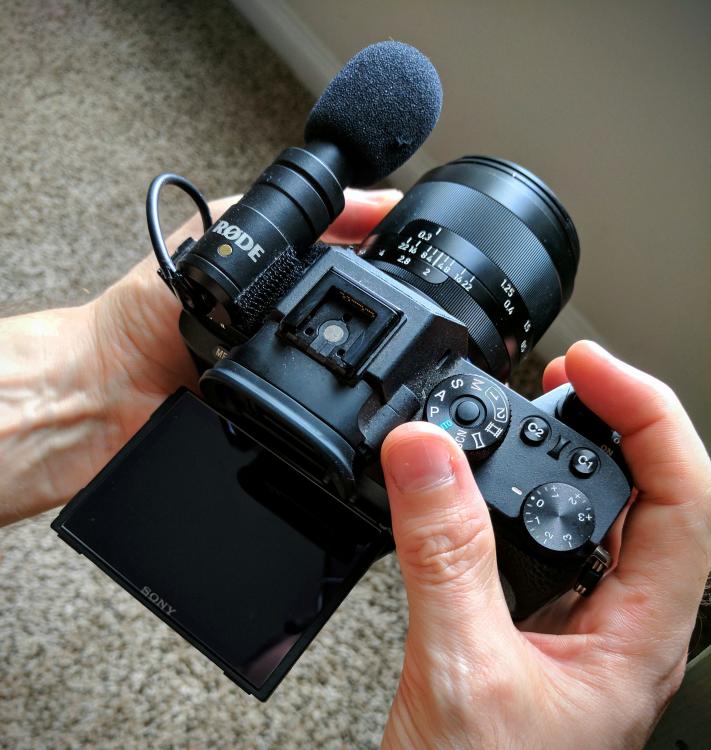
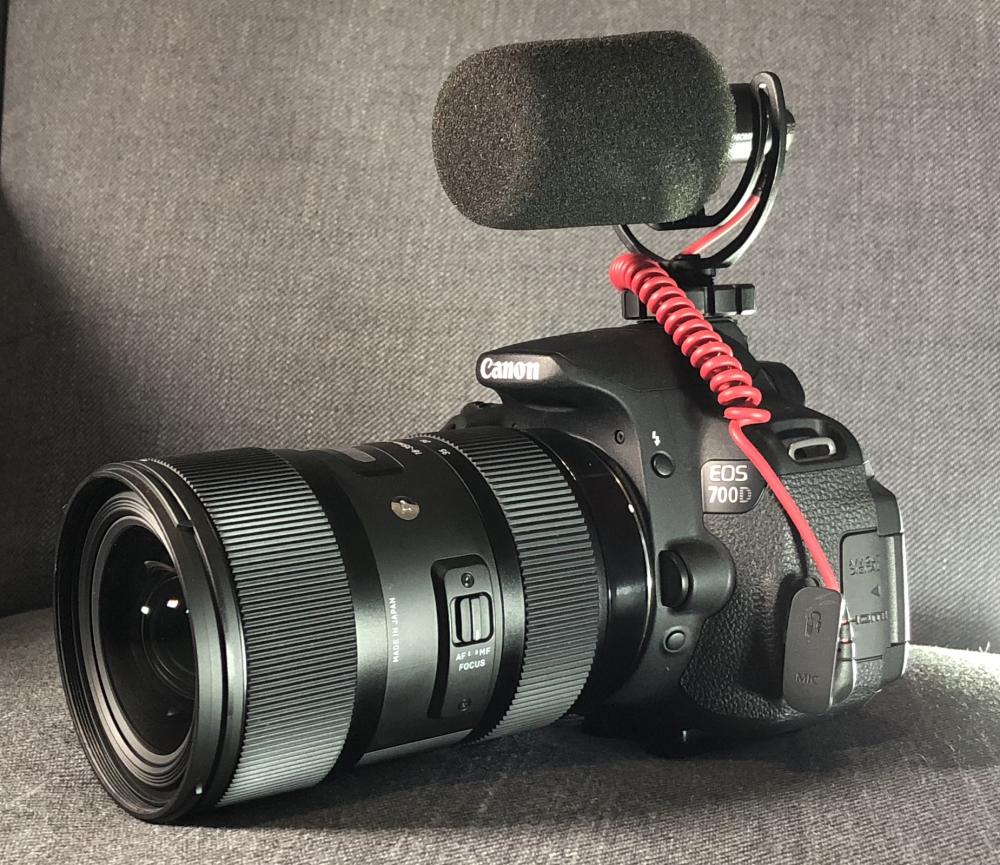
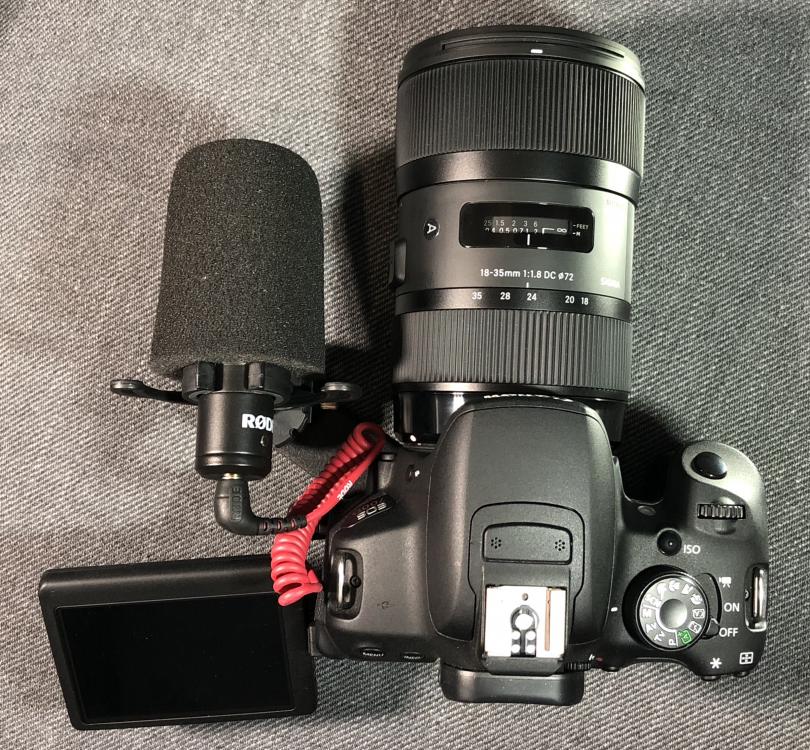
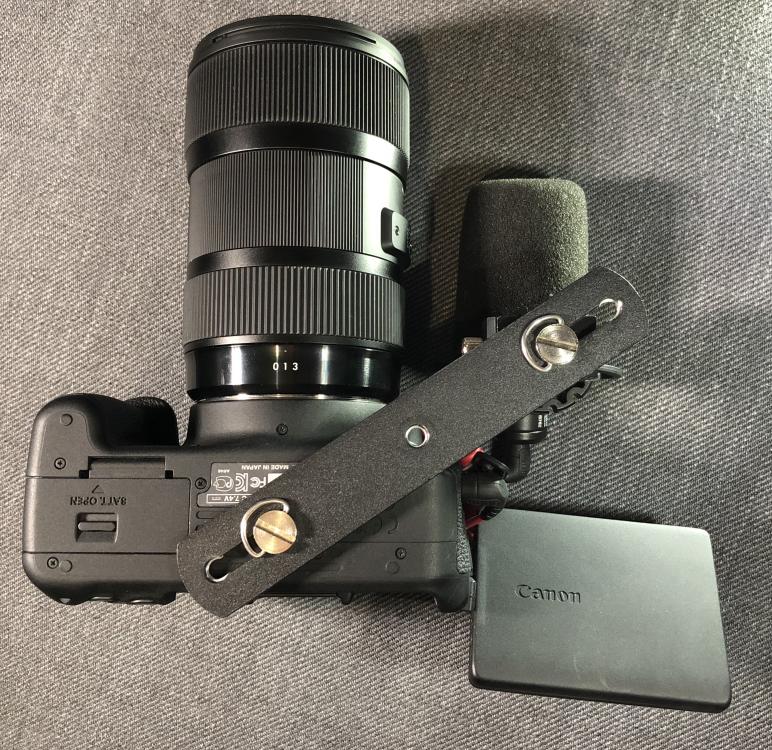
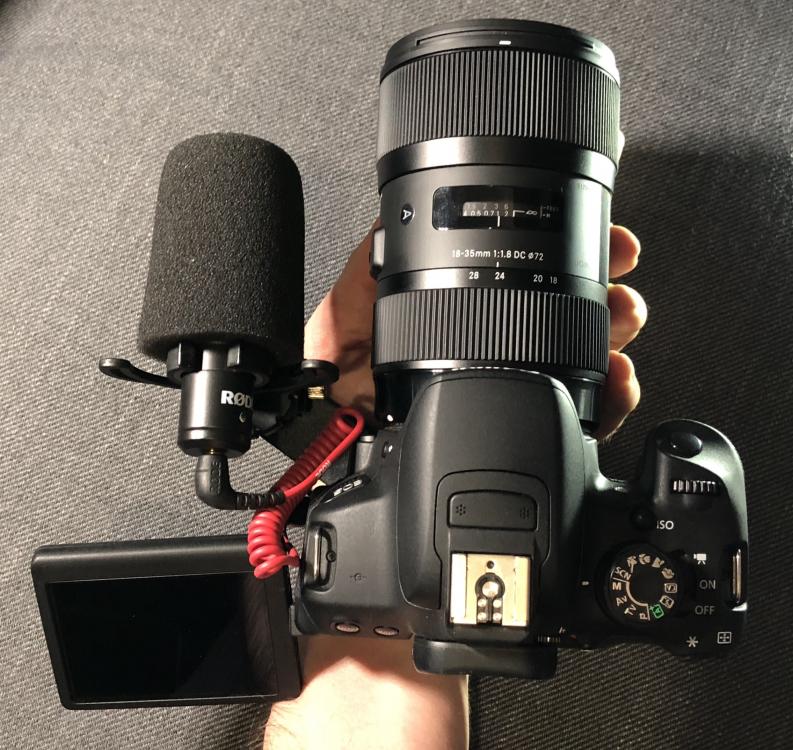
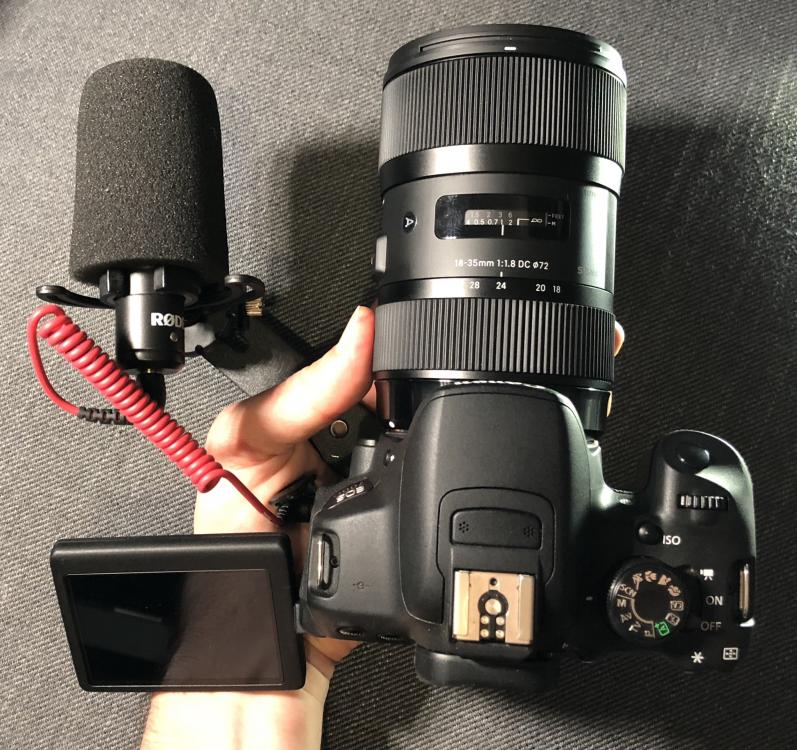


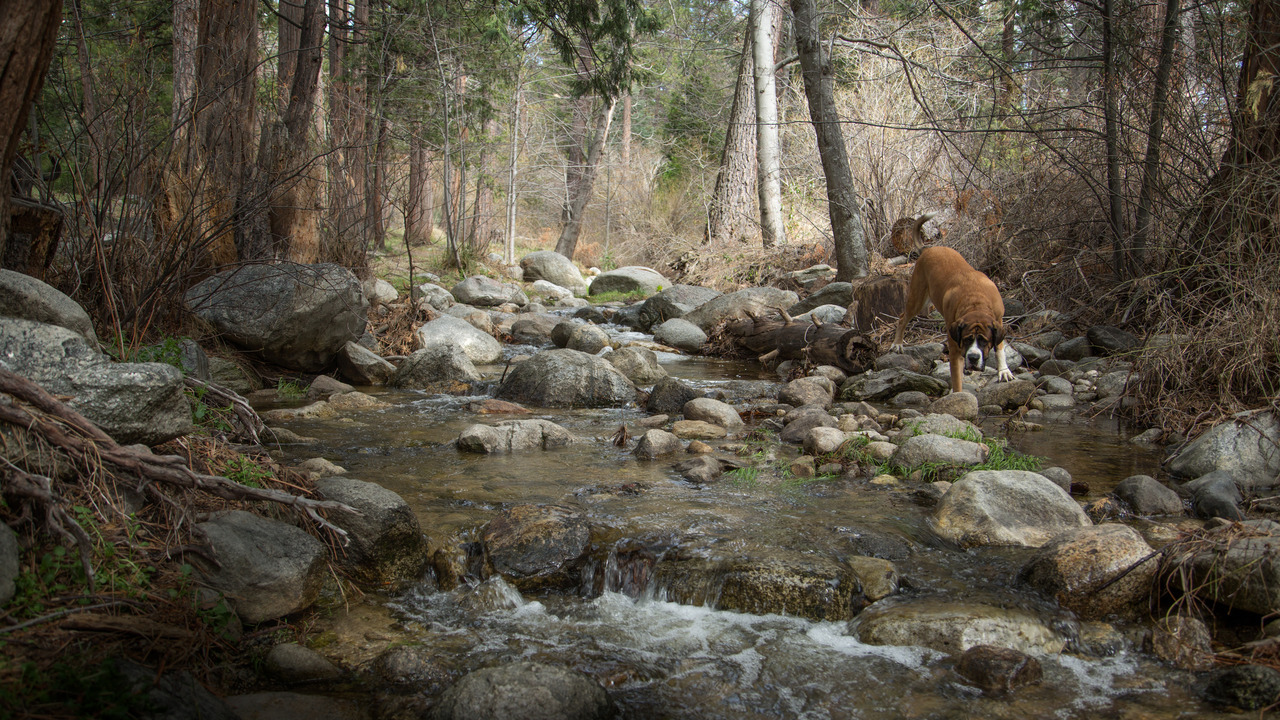


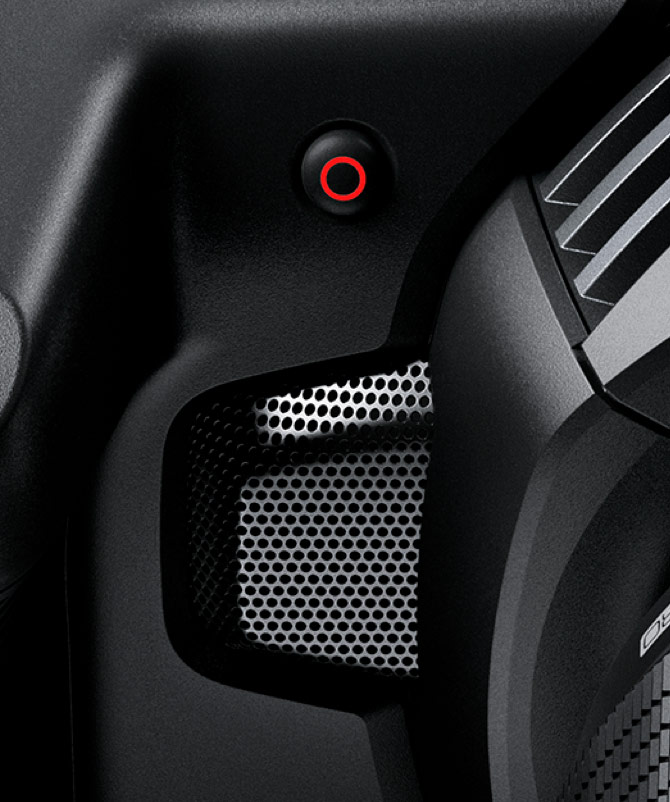
Blackmagic Pocket Cinema Camera 4K
In: Cameras
Posted
Just listened to it.. I'm assuming it was the 12fps clip?
Audio sounded good, but there was nothing in front of the camera making noise so not way to judge isolation / directionality
Hmm.. unless they're recording 4 channels of audio it is possibly to control pickup pattern. Promising!